Cauliflower is a cruciferous vegetable from the Brassicaceae family that has been enjoyed worldwide for thousands of years. It has a mild flavor and can be cooked in various ways, making it an ideal ingredient to add to your diet. This article will provide information on cauliflower’s nutrient content, benefits, and culinary uses.
What is Cauliflower?
Cauliflower is a cruciferous vegetable from the Brassicaceae family, including broccoli, kale, and cabbage. It has an edible head composed of tightly packed florets that are white. The entire plant can grow up to two feet tall with leaves that range from light green to dark purple. It has a mild flavor that is similar to broccoli but slightly sweeter.
History and Origin of Cauliflower:
Cauliflower has been enjoyed around the world for thousands of years. It originated in the Mediterranean and was cultivated by ancient Greeks and Romans. By the 16th century, it had spread to Italy and France, where it was considered an exotic delicacy. Over time, its popularity spread across Europe and into North America, where it is now widely available.
Types of Cauliflower:
There are four main types of cauliflower: white, orange, green, and purple. White cauliflower is the most common variety and has a mild flavor that pairs well with many dishes. Orange cauliflower is a cross between white and yellow varieties and has a slightly sweet taste. Green cauliflower is an Italian heirloom variety with a milder flavor than white cauliflower. Lastly, purple cauliflower has a vibrant hue and a slightly sweeter taste than the other varieties.
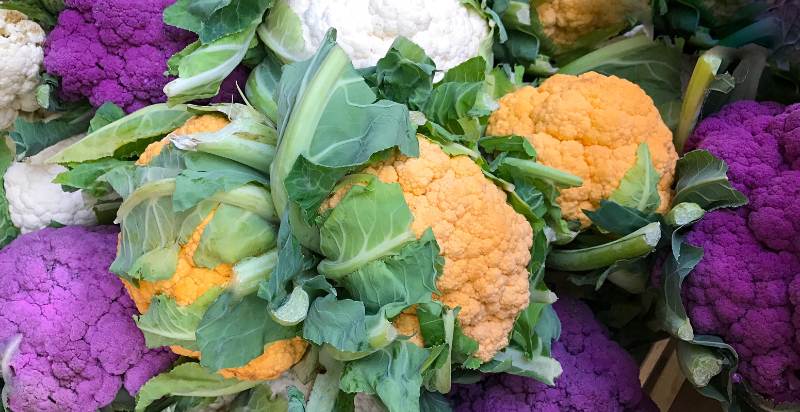
Nutrition of Cauliflower:
Cauliflower is a great source of vitamins, minerals, and fiber. It contains vitamin C, manganese, potassium, phosphorus, magnesium, and folate. It is also high in fiber and low in calories which makes it an ideal food for weight loss. Additionally, cauliflower is low in carbohydrates, making it suitable for those following a ketogenic or low-carb diet.
Benefits of Cauliflower:
Cauliflower is a great addition to any diet due to its health benefits. It is rich in antioxidants, which can help protect against chronic diseases such as cancer and cardiovascular disease. Additionally, it may also help lower cholesterol levels and improve digestive health. Furthermore, its high fiber content can help improve satiety and aid in weight loss.
Culinary Uses of Cauliflower:
Cauliflower is a versatile vegetable that can be cooked in many different ways. It can be roasted, steamed, grilled, or pureed into a creamy soup. Cauliflower is also ideal for making low-carb substitutes for rice, mashed potatoes, and pizza crust. It can also be used in healthy dishes like stir-fries, curries, casseroles, and salads.
How to Plant Cauliflower?
Cauliflower is a cool-season vegetable that can be transplanted or directly seeded into the garden. It grows best in full sun and requires consistent, even moisture and fertilization for optimal growth. Planting cauliflower correctly can help ensure a bountiful harvest!
Step 1: Prepare Your Garden Bed
Before planting cauliflower, prepare your garden bed by loosening the soil with a rake and removing any stones, weeds, or debris. You can amend the soil with compost to improve drainage and fertility if necessary.
Step 2: Select A Variety Of Cauliflower
Next, select a variety of cauliflower to grow from seed packets or nursery plants. Choose one that is suitable for your climate and has an early maturity date.
Step 3: Plant Cauliflower Seeds Or Seedlings
If planting seeds, sow them directly into the prepared garden bed and cover them with a thin layer of soil. If transplanting seedlings, dig small holes in the bed and carefully place each plant in the hole. Make sure to press down firmly to remove any air pockets.
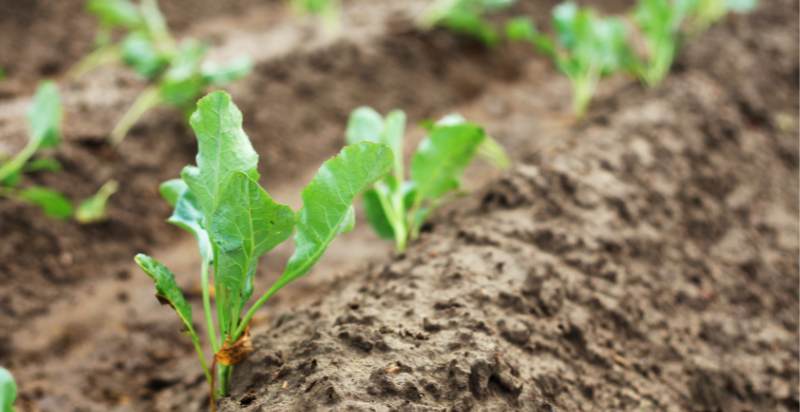
Step 4: Water And Fertilize
Water your cauliflower plants regularly and deeply throughout the growing season to ensure even moisture levels. Fertilize according to label directions or test results from a soil testing laboratory.
Step 5: Protect From Pests And Diseases
Cauliflower can be susceptible to pests and diseases such as aphids, slugs, and clubroot. Monitor your plants regularly for signs of disease and take appropriate action if necessary.
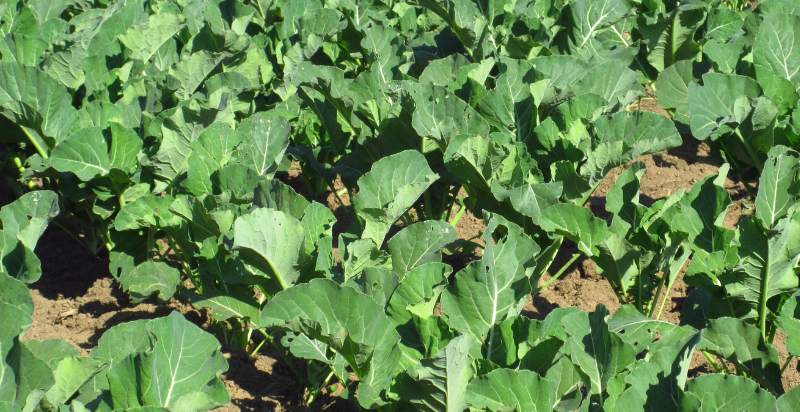
Step 6: Harvest
Once the heads of cauliflower have reached the desired size, they are ready to harvest! Use a sharp knife or scissors to cut the heads off at the base. Enjoy your fresh, home-grown cauliflower immediately, or store it in a cool place for later use.
Now you know how to grow delicious cauliflower in your garden! You can enjoy this nutritious vegetable all season long with proper care and patience. Happy gardening!
How to Care for a Cauliflower plant?
Caring for cauliflower plant is relatively easy, but it does require consistent and proper attention to ensure a successful harvest. Here are some tips on how to keep your cauliflower plants happy and healthy:
- Provide the right amount of sunlight – Cauliflower plant needs at least 6 hours of full sun per day, so make sure your garden bed is in an area with plenty of direct sunlight.
- Water regularly & deeply – As with most vegetables, cauliflower plant need consistent moisture levels throughout their growing season. Water them deeply and evenly as needed (usually 2-3 times/week).
- Fertilize according to soil test results– To obtain nutrient-rich produce, fertilize your cauliflower plants according to soil test results or label directions.
- Monitor for pests and diseases – Check your cauliflower plants regularly for signs of infestation or disease. If these occur, treat them immediately to prevent further damage.
- Harvest promptly – harvest your cauliflower heads before the florets begin to separate and turn brown. Cut each head off at the base with a sharp knife or scissors.
By following these simple steps, you can ensure a bountiful crop of delicious, home-grown cauliflower throughout the growing season.
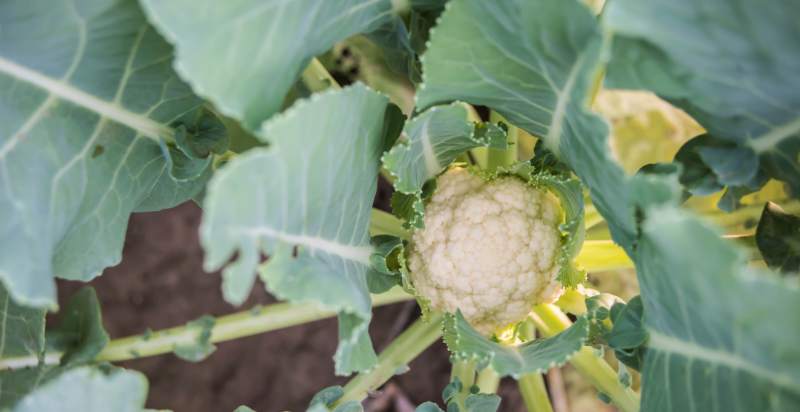
Preventions From Pests and Diseases:
Cauliflower can be prone to various pests and diseases, so it’s important to take the proper precautions to protect your plants. Here are some tips on how to prevent pests and diseases from affecting your cauliflower plants:
- Choose a variety suited for your climate – Some cauliflower varieties are more resistant to certain types of pests and diseases than others, so select one suitable for your region.
- Practice crop rotation – Rotating the location of where you plant each year can help reduce the chance of disease and pest infestation.
- Maintain good garden hygiene – Remove weeds, debris, and other plant material regularly to reduce potential hiding spots for pests.
- Monitor for pests and diseases – Regularly check your plants for signs of pests or diseases, such as aphids or clubroot. If you see any, take steps to treat the problem immediately.
By following these tips, you can help reduce the chance of pest and disease infestation in your cauliflower plants, ensuring a healthy and successful harvest!

How to Harvest Cauliflower Plant?
Harvesting cauliflower is a relatively easy task. Once the heads of cauliflower have reached your desired size, cut them off at the base with a sharp knife or scissors. It’s important to harvest cauliflower promptly – once the florets begin to separate and turn brown, it’s time to pick them!
It’s also important to note that some varieties of cauliflower may require blanching before harvesting. Blanching involves tying up the leaves around the head of the plant to cover it and protect it from sunlight. This will help maintain its white color and crunchy texture.
Once you’ve harvested your cauliflowers, enjoy the fruits of your labor! Cauliflower is a nutritious and versatile vegetable that can be enjoyed in many dishes, from salads to casseroles.
And there you have it – with proper care and attention, you can grow delicious cauliflower in your garden.
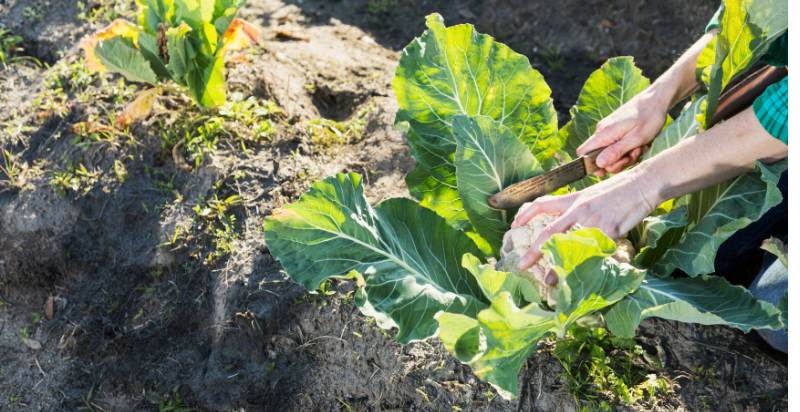
How to Store Homegrown Cauliflower?
Once you’ve harvested your cauliflower, it’s important to store it properly to maximize its shelf life. Here are some tips on how to do this:
- Clean the heads – Before storing, rinse the heads quickly under cold water and pat them dry with a paper towel. Remove any leaves or debris from the head of the cauliflower.
- Trim off green leaves – Cut off any remaining green leaves from around the head of the cauliflower. These can cause premature rotting if left attached.
- Store in an airtight container– Place each head of cauliflower in an airtight container or plastic bag and store it in the refrigerator. This will help keep the cauliflower fresher for longer.
- Consume within a few days – Try to consume your cauliflower within 3-4 days of harvest for maximum freshness.
Following these tips, you can successfully store your homegrown cauliflower and enjoy its delicious taste for days to come!
With these simple steps and tips, you can easily grow and harvest delicious homegrown cauliflower in your garden. Enjoy the fruits of your labor with this nutritious vegetable! And don’t forget to take precautions against pests and diseases to ensure your plants stay healthy throughout the growing season.
How to Use Cauliflower?
Now that you’ve harvested your cauliflower let’s explore some delicious ways to enjoy it! Cauliflower is a highly versatile vegetable and can be used in a variety of dishes. Here are just a few ideas:
- Roasted – Cut the head into florets and toss with oil, salt, and pepper before roasting them in the oven until golden and crispy.
- Pureed – Boil or steam the cauliflower florets until soft, then puree them with butter or cream for a smooth texture.
- Stir-fry – Chop up the florets into small pieces, then stir-fry them with garlic and other vegetables such as bell peppers and onions.
- Soup – Puree-cooked cauliflower florets with vegetable or chicken stock for a creamy soup perfect for chilly winter nights.
These are just some ideas, but the possibilities are endless for using cauliflower! So get creative in the kitchen and enjoy your delicious homegrown cauliflower in many ways. Happy harvesting!

Potential Risks From Cauliflower:
While cauliflower is generally a safe and nutritious vegetable, some potential risks are associated with its consumption.
- Allergic reactions – Those with an allergy to cruciferous vegetables such as broccoli, Brussels sprouts, and cabbage may also be allergic to cauliflower. If you experience any symptoms of an allergic reaction after eating cauliflower, seek medical attention immediately.
- Gastrointestinal distress – Eating large amounts of raw cauliflower can cause gastrointestinal distress, such as bloating or gas. To avoid this issue, it’s best to cook the cauliflower before consuming it.
- Pesticide residue – It’s important to purchase organic cauliflower whenever possible to reduce your exposure to pesticide residue.
Following these guidelines allows you to enjoy your homegrown cauliflower without worrying about potential risks!
Conclusion:
Growing and using cauliflower is a great way to add flavor and nutrition to your diet. With proper care and attention in the garden, you can grow delicious cauliflower in your backyard. Store it properly and use it in various dishes – from roasted florets to creamy soups or stir-fries – for a tasty meal that will please any palate. Enjoy the sweet taste of homegrown success with this nutritious vegetable!
- Everything You Wanted to Know About Red Tamarillos - June 2, 2025
- A Guide to Tulips: Everything You Need to Know & More… - June 2, 2025
- Guanabana: Description, Flavor, Benefits, And Uses - May 27, 2025

10 thoughts on “What is Cauliflower? How to Plant, Grow, and Harvest Cauliflower ”
Comments are closed.